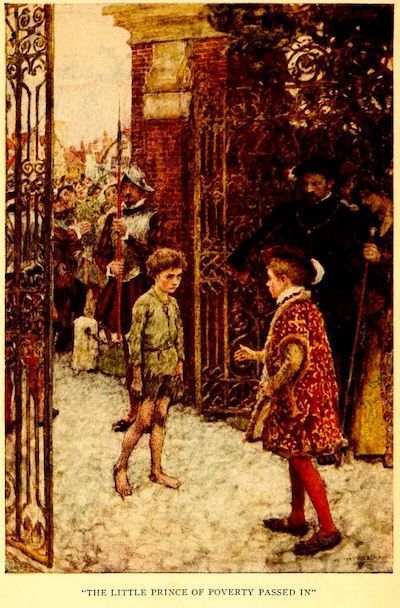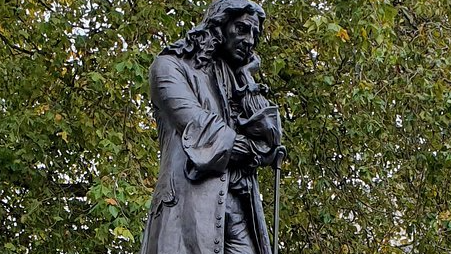Same Sex, Different Love
Digging Deeper Facing the Issues #5
Same sex, different love?
Over the last several years the Church of England has been examining the very differing views that Christians have over questions of identity, sexuality, relationships and marriage. By their nature, such discussions can give rise to very strong views on both sides. The issues of gender identity are covered here, of sexual orientation and biblical references further below.
During 2021 parishes, deaneries and dioceses are asked to give consideration to the national discussion document called Living in Love and Faith.
Under the Premiership of David Cameron in 2014 the then Coalition government passed legislation to legalise same-sex relationships under the Marriage (Same-Sex Couples) Act. You may like to read a fact sheet published by the Government at the time here: 140423_M_SSC_Act_factsheet__web_version_.pdf (publishing.service.gov.uk) It is made clear that such marriages are considered to be ‘Civil’ and not ‘religious’ in character and that faith communities must decide on an individual basis as whether or not to allow the conduct of same-sex marriages by its ministers and on its premises. It is this which has led to the current debate.
Living in Love and Faith is a wider consideration of gender, sexuality and marriage, however. The report considers the issues of those who consider they have a binary gender, or are transgender and how this is expressed in day to day life in modern society. It examines fundamental questions of how we define ourselves as human beings, how we relate to each other with different experiences of gender and sexuality and the role of living in faith in a Christian community.
You can view a short introduction to the themes of the report here: Introducing Living in Love and Faith - YouTube
You can download and read the whole report here: Living in Love and Faith | The Church of England
St. Michael’s is by tradition a Liberal Catholic church and is aligned to the Inclusive Church movement. This means we have a more open and questioning view of scripture. This does not mean that we do not respect or take scripture seriously but we do use reason to challenge and re-evaluate the Bible for our modern times. (The Anglican Church would say it is built upon the pillars of Scripture, Tradition and Reason). As a Christian community we hope to welcome people from all experiences to play a full part in the life of our church. You can read more about this on our website or on ‘A church near you’ (postcode PR2 1AJ).
You can learn more about Inclusive Church and what it says about sexuality here: Sexuality – Inclusive Church (inclusive-church.org) Sexuality – Inclusive Church (inclusive-church.org)
February is LGBT+ History month and you can find more details here: - LGBT+ History Month (lgbtplushistorymonth.co.uk)
As the issue of the role of women in the Church, and whether or not they might scripturally or by tradition act as priests was divisive, so too, sadly, is the consideration of human sexuality, gender and identity which is also a topic of ‘hot debate’.
The views of Conservative Evangelicals in the Church of England are broadly represented by the Church of England Evangelical Council which is chaired by Bishop Julian, our diocesan bishop. You can read a report of his comments following the publication of Living in Love and Faith here: Evangelicals turn to ‘alternative solutions’ if changes to doctrine on sexuality are made (churchtimes.co.uk) Bishop Julian wrote subsequently to all members of clergy in the diocese reemphasising his role as a symbol of unity in the Church..
The view of Conservative Evangelicals more widely is represented in a document produced by the Evangelical Alliance (member churches of which are not all Church of England but Baptist and Independent) which you can read here: Transformed.pdf (eauk.org)
An outline of Biblical texts are noted below:
What does the Bible say about same-sex relationships?
The biblical texts:
Genesis 19. 1-14, Leviticus. 18. 22; 20.13, Deuteronomy 23.17-18, Romans 1.24-27, 1 Corinthians 6.9-10, 1 Timothy 1.10
Brief synopsis of each text:
Genesis: The key verse is v5 where the men of Sodom, thinking the angels are mortals wish to ‘know’ them. To’ know’ is usually interpreted as to ‘have sexual union’. Some scholars argue that this passage can be interpreted as a gang rape or equally is part of a wider condemnation of the society of Sodom which was seen to be moving away from God (see Is. 1.10, 3.9 (injustice), Jeremiah 23.4 (irresponsible acts) Ezekiel 16.49 sin of pride, excessive food and indifference to the needy. The scholarly consensus is that this passage refers to gang rape rather than consensual relationship.
Leviticus: This book aims at teaching the people of Israel to live as a holy nation. This is therefore a comprehensive guide to every aspect of national life. The two references are specific in their condemnation and the scholarly consensus is that this is the case. However, some, while not arguing with the texts, question why the texts are condemnatory. e.g. is the condemnation about ritual sexual acts, which are seen to be idolatrous. Some argue that the whole of Leviticus 18 is about building stable family life, and therefore the condemnation is really about the sterility of the act and consequential loss of semen. Masturbation would be similarly condemned.
Deuteronomy: The function of this book was, like Leviticus, to set the seal upon fidelity to the law before the people of Israel entered the Promised Land. V. 17-18 is a condemnation of cultic prostitution. In the Authorised Version the Greek word quades is translated as ‘dog’ and in the RSV as ‘sodomite’. There are six other references to such people in the OT (Deut. 23.17, 1 Kings 14.24, 15.12, 22.46, 2 Kings 23.7 Job 36.14). The scholarly consensus is that these texts condem all male prostitution not just homosexual prostitution.
Note there is no reference to lesbianism in the OT. What is clear is that the Early Church, when faced with lesbianism in the Hellenistic culture, saw the prohibitions of Leviticus as pertaining to women also.
Romans: This is a complex letter and in it Paul sets out his attempt at giving his full understanding of the good news of Jesus Christ for all people. The gentile world had turned away from God and worshipped idols. They gave up God to a whole list of sins including sexual immorality. Those who had given themselves up to this paganism had turned away from the natural order. The scholarly consensus is that this is the correct reading of this text. Early commentators have read the reference to ‘unnatural’ acts to include anal intercourse or women taking the ‘superior’ position during the sexual act. It is now taken that Paul was referring to lesbianism.
1 Corinithians: The context of this text is Paul’s warning to the members of the Church about taking each other to court to settle disputes. As an example of ‘unrighteousness’ Paul condemns in the RSV translation ‘sexual perverts’. Traditionally this was seen as homosexual activity. However, more recent interpretations of the Greek words malakoi and arsenokitai do not refer specifically to homosexuality at all but to male prostitution including pedestary. There is no word in Greek or Hebrew for homosexual activity. Rather the words refer to ‘passive partners’, often young boys. Paul seems to be making a reference to the holiness code of Leviticus and is reapplying traditional OT condemnation to the Church of Corinth.
1 Timothy: In this context the church is again troubled by false teachers. In the NSRV the word ‘sodomites’ is in fact the Greek arsenokitai as in 1 Corinthians. Some have argued that verses 8-10 are a development of the second half of the Ten Commandments. ‘ It is clear that what was forbidden under the old code is also forbidden under the new.’
Some reference on the position of Jesus
Jesus reached out to those who were morally unacceptable and ritually unclean ( Matt. 9.9-13)
Mark 5.25-34, he was prepared to subordinate Jewish law to human need ( Mark 2.23 – 3.6) and when asked to summarize the Law he emphasised the commandment of love. ( Mark 12.28-34).
It may be interpreted that Jesus did implicitly reject homosexuality in Mark 7.21 where ‘fornication’ was taken to understand to refer to all things prohibited in Levitical law including bestiality, incest and adultery.
Definitions.
Homosexuality: ‘The presence of a predominant and persistent psychosexual attraction towards members of the same sex’.
Gays and Lesbians: A preferred term in modern culture being seen as less ‘clinical’ and not purveying the ‘narrow genital focus’ in the definition of a person. ref. ‘Gay icon’, ‘Gay bar’ etc.
Orientation: ‘The best that can be said is that little is understood conclusively about the genesis of either homosexual or hetrosexual orientation.
Four theological positions:
Rejecting-punitive: Homosexuality is unconditionally rejected, either in orientation or in its general expressions. There is a punitive attitude toward lesbians and gay men. Such arguments rest upon literal non contexual interpretations of passages of scripture and are usually buttressed by cultural stereotypes of homosexual people.
Rejecting-nonpunitive: Homosexual acts are condemned as unnatural, idolatrous and a violation of God’s creative intent. A distinction is made between acts and orientation. Aquinas argued that sexual intercourse without the intent of generation was a sin against nature. (nb on this rests the Catholic argument against contraception). Orientation is not condemned but understood as essentially flawed. The person of homosexual orientation is therefore someone, who in the light of God’s mercy, should be treated compassionately and in need of the Church’s ministry. In extremes this has led to so called ‘conversion therapies’ or ‘pray-the-gay-away’, an action explicitly forbidden by the Church of England.
Qualified acceptance: Stance as before, in that homosexual activity is against God’s created order. However, understanding that orientation is fixed in an early age and the desire should be sublimated. If this is not possible then sexual activity should take place only with a mognonomous relationship.
Full acceptance: Sexual orientation is a given and not therefore a matter of personal choice. Homosexual acts are elevated to the same status as heterosexual acts. This flows from elements of C17th Protestant theology which saw sexuality as unitive i.e all sexual acts ought to be evaluated by their relational qualities. Does the relationship enhance human fulfilment, faithfulness, mutuality, genuine intimacy and communion?
The position of the House of Bishop’s in Issues in Human Sexuality (1991) was then one of ‘qualified acceptance’. However, those who were openly and practicing gays were not to be ordained. This situation has changed although it continues to be the case that gay clergy are expected to be celibate. The Church of England now recognizes clergy in Civil Partnership but not who have married.
You can read the story of one such case here:
Gay hospital chaplain loses discrimination appeal against C of E | Anglicanism | The Guardian



